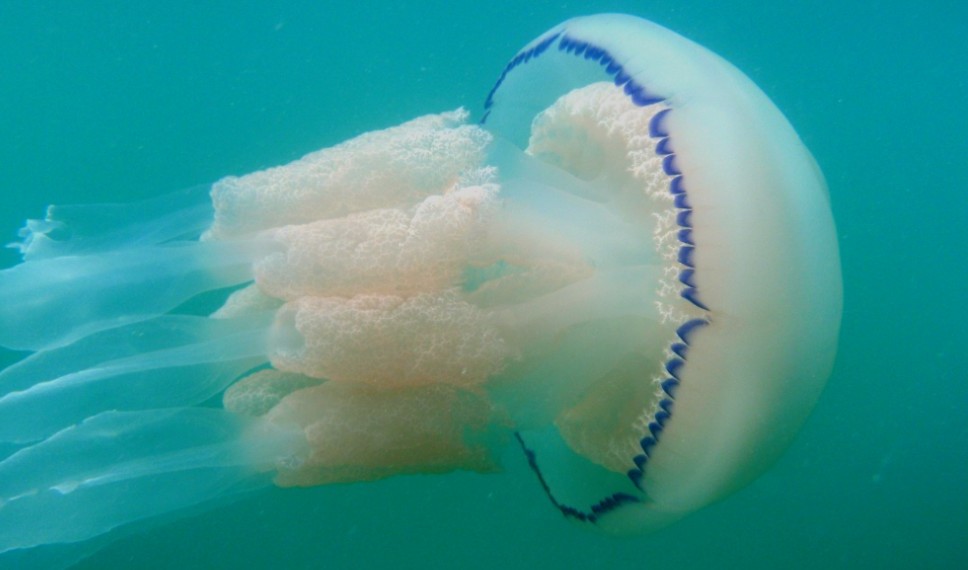Jellyfish are able to detect the direction of ocean currents, according to recent research by a joint team of environmental scientists. The team studied the movements and of free-ranging barrel-jellyfish and found that the animals are “incredibly advanced in their orientation abilities.”
“Most people who have spent time on the coast will have seen jellyfish and probably assume they are simple animals that just drift with ocean currents,” Dr. Graeme Hays, professor at Deakin University’s School of Life and Environmental Sciences and an author of the study, told The Speaker.

“Our work shows this is not necessarily the case, and instead jellyfish can show remarkable abilities to sense currents, change their swimming behaviour accordingly, and hence maintain their position in preferred areas. These abilities contribute to the massive blooms of jellyfish that are widely being reported around the world.”
The team collected data using GPS loggers that were placed both on the jellyfish and on floats on the ocean’s surface. The researchers then created a model of jellyfish behavior that took into account ocean currents.
From the research, the team has formed a clearer picture of the lives of individual and groups of jellyfish.
“We now know that jellyfish are not simply passive drifters, but instead can make complex movements that help maintain massive blooms which have been seen in many places around the world.”
The research will help efforts to manage these blooms, which can involve hundreds to millions of jellyfish for months-long periods and which can be troublesome when they clog fishing nets or sting beachgoers.

How jellyfish are detecting the currents remains unknown, but Hays provided us with an educated guess about what he believes is the most likely answer: that the jellyfish are able to sense the shear of the water.
“Most probably the jellyfish are using the fact that the currents change slightly with depth–current shear. So this means that different parts of the body of the jellyfish are experiencing slightly different currents. It is probably this difference in current flow across their body that the jellyfish can perceive, allowing them to detect the current flow and modify their swimming accordingly.”
The report, “Current-oriented swimming by jellyfish and its role in bloom maintenance,” was completed by Graeme Hays, Sylvie Vandenabeele and Sabrina Fossette, and was published in the journal Current Biology.
By Sid Douglas
Photos by Graeme Hays
